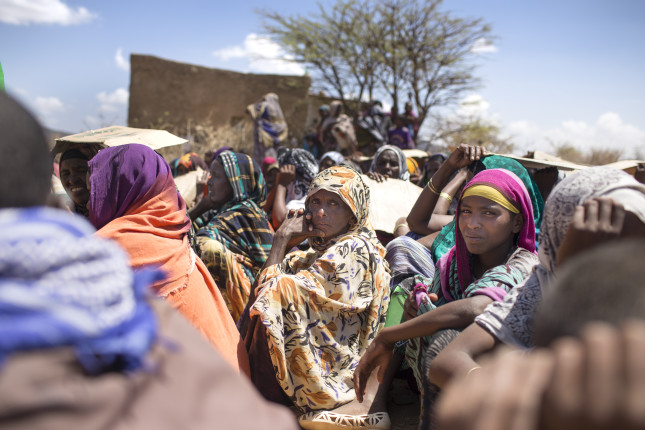-
Safe from the Start: Addressing Gender-Based Violence in Times of Conflict and Crises

“As a leader in providing global humanitarian aid, the United States must be a leader in protecting all aid recipients,” said Congresswoman Chrissy Houlahan (D-PA-6) at a recent event on Capitol Hill about gender-based violence in humanitarian settings. A violation against human rights, gender-based violence (GBV) is deeply rooted in gender inequality. It’s a global phenomenon that involves sexual, physical, and/or psychological violence, including child marriage, female genital mutilation, and other harmful practices.
“We have one day a year to celebrate women, International Women’s Day; we have one day a year to celebrate girls, International Day of the Girl; and we need 16 days every year to mark violence against women,” said Helena Minchew, Women’s Protection and Empowerment and Gender Equality Advocacy Advisor at the International Rescue Committee (IRC).
Safe from the Start Act 2019 (H.R.4092), was introduced in July 2019 “to improve United States consideration of, and strategic support for, programs to prevent and respond to gender-based violence from the onset of humanitarian emergencies.” The act aims to strengthen the existing Safe from the Start program hosted by USAID and U.S. Department of State through new authorizing legislation, and has broad bipartisan support. It addresses the needs of all groups at risk of GBV in emergencies, including men and boys. Safe from the Start also recognizes women’s and girl’s roles as agents of change and first responders, and the importance of women’s leadership and participation in humanitarian settings. “We’re trying to make responses effective, and make the people who are impacted have a voice in the programs,” said Gayatri Patel, Director of Gender Advocacy at CARE.
“The largest flow of refugees in recorded history is being forced from their home countries, and their time spent displaced has increased from years to generations,” said Congresswoman Grace Meng (D-NY-6). According to the UN’s latest humanitarian report, 168 million people will need humanitarian assistance in 2020 and without dedicated efforts to slow climate change and end armed conflicts, that number could reach 200 million by 2022. Last year, 34 million women and girls of reproductive age—5 million of them pregnant—required humanitarian assistance. This year alone, 14 million refugees and displaced women and girls have been subjected to sexual violence. And yet, the IRC found that between 2016 and 2018, only .12 percent of funding allocated to humanitarian response was specifically allocated to GBV in emergencies.
The GBV epidemic is greatly influenced by notions of virginity, sexuality, rape, shame, and a culture of blame. “Stigma. It permeates every single thing we do,” said Amany Qaddour, Regional Director of Syria Relief and Development (SRD). Adolescent girls are especially vulnerable in humanitarian settings. They are generally not in formal schooling and their right to move freely is diminished. Humanitarian programs and local women’s groups strive to increase awareness of GBV, to educate women and girls about their health and rights, and to empower them to seek services when needed and use their voices to advocate for what they want. “If we want to raise responsible young men, and responsible families, the key is empowering young girls,” said Congressman Ami Bera (D-CA-7), “you can’t actually achieve women’s empowerment, if you can’t empower women to be in charge of their own body.”
“When you’re negotiating peace, you need to have the women at the table,” said Congresswoman Brenda Lawrence (D-MI-14), “men will talk about issues that’s land and water and oil and we can reach an agreement in a handshake, but they don’t address the complete issue of conflict when it comes to the oppression and the assault of women.”
Sources: International Rescue Committee, UN, UN Entity for Gender Equality and the Empowerment of Women, UN Office of the Coordination of Humanitarian Affairs, UN Population Fund, U.S. Congress, U.S. Department of State
Photo Credit: Photo by Melih Cevdet Teksen, via Shutterstock. All rights reserved.
 A Publication of the Stimson Center.
A Publication of the Stimson Center.



